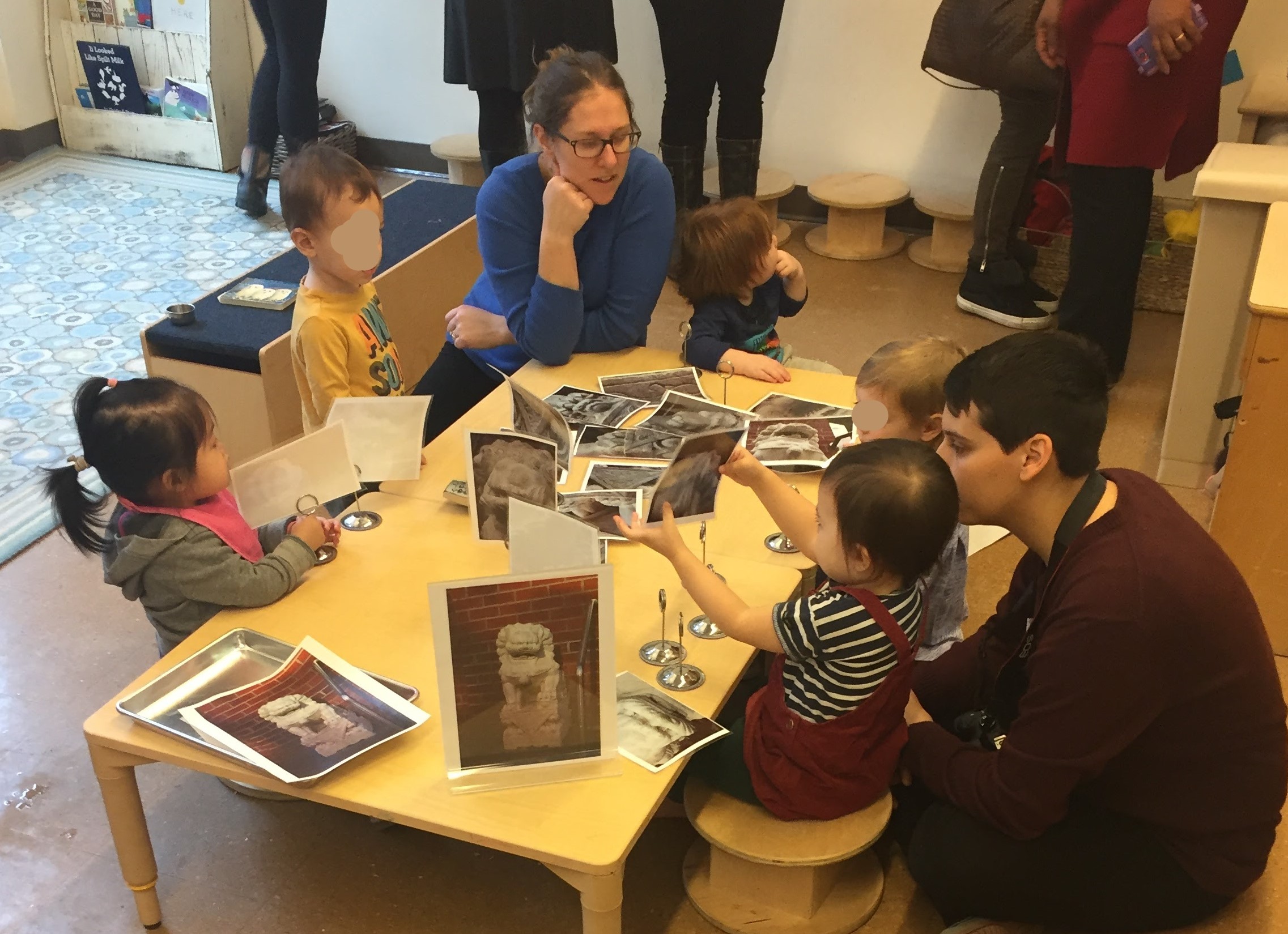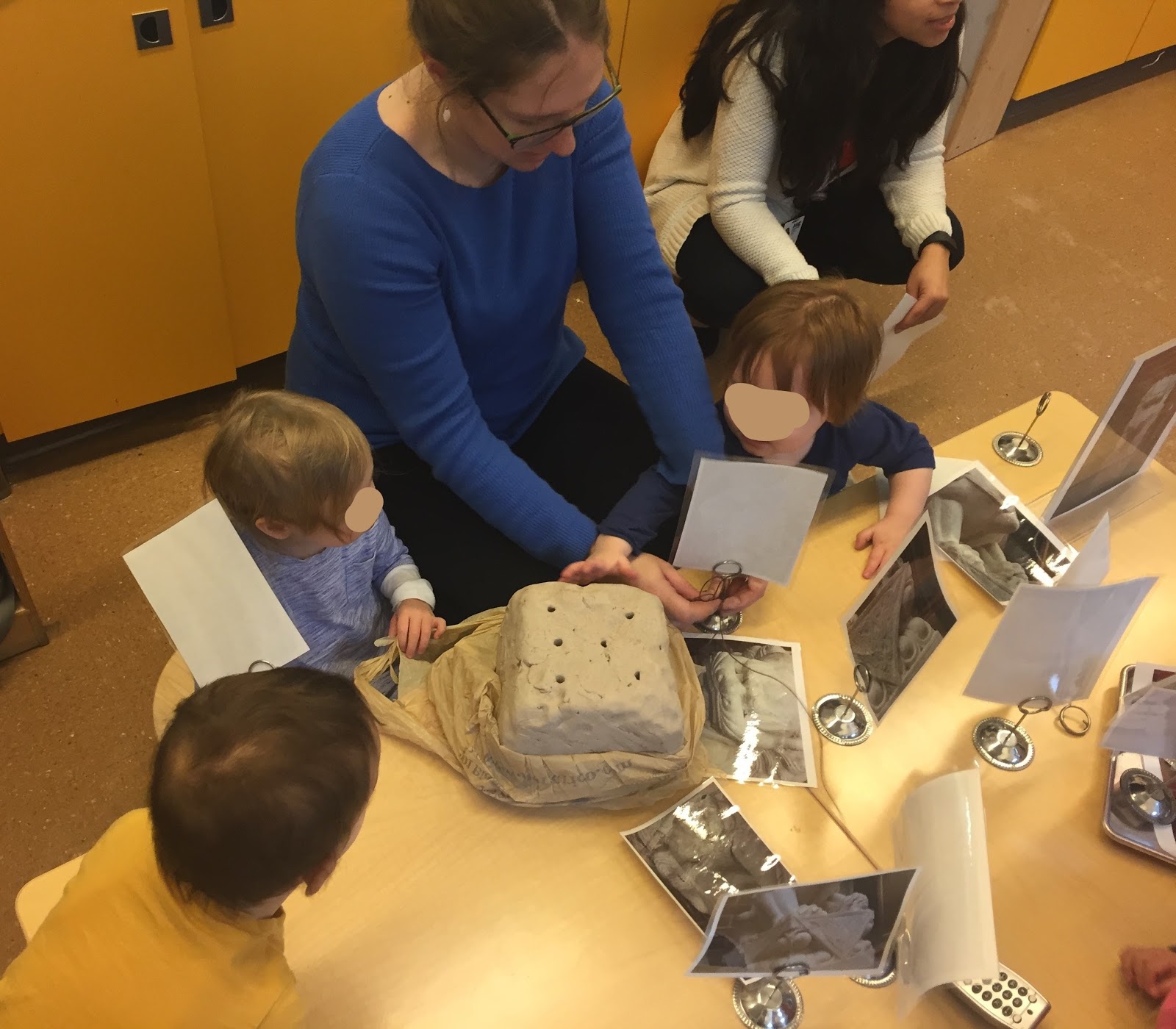Adding the Teacher’s Voice at the Educational Alliance Preschool
Adding the Teacher’s Voice: Deconstructing an Intriguing Toddler Activity
Site Visit Journal | News Post and Reflection | Adding the Teacher's Voice
Shariee Calderone with Jessica Bieber
I’ve mentioned this a few times to my colleagues… one of the things that would have made our visit to the Reggio Emilia Wonder of Learning exhibit in Brooklyn back in 2015 even more incredible than it already was, would have been if they had figured out a way to include the teachers’ voices in with the students’ voices. I couldn’t help but look at all the wonderful documentation panels and wonder: How did this activity come to be? What place before? What was the question the educator was sitting with? Did their thinking waver and change during the process?
On a recent In-site-ful Journey visit to the Educational Alliance Preschool at the Manny Cantor Center, educators had the chance to walk in and out of various classrooms. On these visits the school directors help set the stage with where their school is, relative to their own journey, and the visiting educators check out the environments and observe the children and the teachers engaged in their normal activities. On this visit, one room in particular, the toddler room, seemed to garner a lot of interest. A group of children were sitting together with their teacher around a table with an assortment of black and white photos. Some photos were on the table and some were in these handy photo holders with clips. We could see pictures of buildings and lion statues and the little hands that were inspecting them. There was clay too. But truth be told there wasn’t much more. And all the children were totally engaged. We didn’t know what those pictures were of and we didn’t know what preceded this activity.
All we could see was the utter joy and interest that was being displayed by the children and the gentle guiding manor of the teacher, who seemed equally invested and interested.
So to get a little background and insight, I reached out to Jessica, the toddler teacher in these photos. Here’s what Jessica had to say….
Hi Shariee,
I'm Jessica, the teacher you observed in the toddler room with the lion photos. I am so glad to hear that you found the visit to be interesting and informative. We were honored to host you!
The lion research is a very exciting element of our classroom lives right now, and I'm happy to share more information about how it came to be.
At the beginning of the year, my co-teachers and I set out to document and to learn about how children come to know a place. How do they become part of the community? What intrigues them? What do they see that maybe adults don't see? We outlined a thesis statement of sorts, which included questions about how children develop a sense of place, and how familiarity with their community can take them from being residents of a place to being citizens of a place.
We started this research by going on lots of walks. Many were "walks to nowhere," so to speak -- we followed the children's lead, sat on the sidewalk and looked at drain covers for ten minutes, climbed lots of brownstone sidewalk stairs, and peered into shop windows. After lots of walks, certain landmarks became favorites. Children would see them in the distance and squeal with anticipation. Two lion statues in front of a Buddhist temple were particular favorites.
We took many small group walks to go "visit the lions." As teachers, we wondered how to bring these immobile, large, heavy stone lions back into our classroom -- particularly in a way that would be appropriate for toddlers. There's tons of "lion curriculum" out there, but how do we make our classroom research about THESE lions, and in a way that is accessible for mostly not-yet-very-verbal toddlers?
We decided to begin by giving the camera to children. The photos you saw were photos children took of the lions, from their point of view. Teachers printed and laminated the photos, with the goal of bringing them back to the children to see what they might do, say, wonder.

That's what you saw during your visit. We started by just looking at the photos. Not sure if you saw, but the reactions were fascinating. Some children said "lion," others named the body parts they noticed; K found a picture of the lion's mane and held it close to her own hair. After some time just examining the photos, we offered clay as a way to extend the experience. We didn't really have an expectation of what might happen, but we liked clay's openness and ability to become anything. We noticed children playing hide-and-seek games, of sorts--they covered the laminated photo with clay, then peeled it off, revealing the lion, and repeated... After a little while, two children made clay "food" to put near a photo of the lion's mouth.

To be honest, we are still not quite sure where this investigation will go. We revisit the actual lions, and the photos, and we keep documenting what children do and say. Yesterday afternoon, actually, children were painting (with no connection to lions, per se, just open painting) and one child announced--without any prompt or questioning--that she was making a painting of a lion. So, it's definitely on their minds!
I'd be happy to keep you posted on this journey, if you'd like to know more. And I must add that I teach alongside three other amazing teachers, all of who have been involved in this project as well. I've sort of unofficially taken the lead on it (and they are taking on other projects), but I have awesome teachers alongside me! :)
Thanks!
Take care,
Jessica Bieber
Jessica’s thoughtfulness and insight inspires me to work harder with educators who don’t yet see their role in asking these invaluable questions about how their children come to know something. Not a fact. But a thing. And the connection between things. And the connections between things and each child uniquely. And the connections between children and their own community. I’m fascinated by Jessica’s process and patience and think we all can learn from her ability to observe children and listen - even when they are not yet verbal.